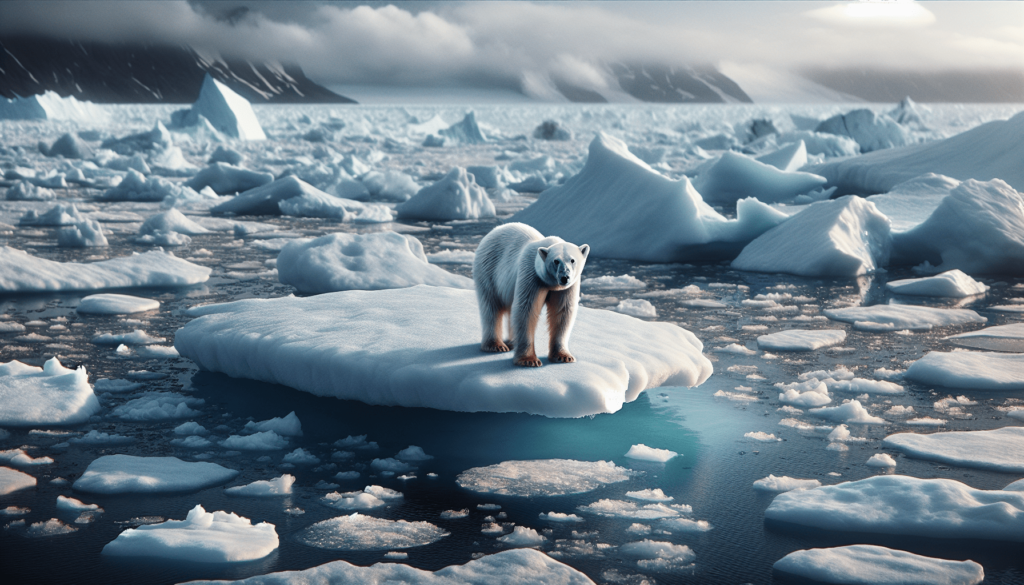The Effect of Climate Change on Endangered Species
Climate change is a pressing issue that affects various aspects of our planet, including our precious wildlife. In this article, we will explore how climate change is impacting endangered species and what can be done to mitigate these effects.

Understanding Climate Change
Firstly, it is essential to understand what climate change is and how it is caused. Climate change refers to the long-term alteration of temperature and typical weather patterns in a place. This change is primarily driven by human activities, such as the burning of fossil fuels, deforestation, and industrial processes.
Impact on Endangered Species
Climate change poses a significant threat to endangered species, pushing them even closer to the brink of extinction. The increase in global temperatures leads to drastic changes in habitat, food availability, and breeding patterns for these vulnerable species.
Habitat Loss
One of the most significant impacts of climate change on endangered species is habitat loss. Rising temperatures result in the melting of ice caps, leading to the loss of critical habitats for species like polar bears and penguins. Additionally, deforestation driven by climate change further exacerbates the issue by destroying essential habitats for various species.
Disruption of Food Sources
Climate change also disrupts the food sources of endangered species, further endangering their survival. Changes in temperature and weather patterns affect the availability of prey for predators such as big cats and marine animals. This disruption in food sources can lead to starvation, malnutrition, and ultimately population decline.

Altered Breeding Patterns
Another critical impact of climate change on endangered species is the alteration of breeding patterns. Changes in temperature and precipitation can disrupt the timing of breeding seasons for many species, leading to decreased reproductive success rates. This can result in a decline in population numbers and genetic diversity within these endangered species.
Case Studies
To understand the real-life implications of climate change on endangered species, let’s look at a few case studies that highlight the severity of the issue.
Case Study 1: Polar Bears
Polar bears rely on sea ice for hunting seals, their primary food source. However, as Arctic sea ice continues to melt due to rising temperatures, polar bears are forced to travel longer distances to find food. This increased travel leads to exhaustion, reduced breeding success, and ultimately a decline in the polar bear population.
Case Study 2: Hawaiian Monk Seals
Hawaiian monk seals are already a critically endangered species, with only around 1,400 individuals left in the wild. Climate change exacerbates the threat to these seals by causing beach erosion, loss of pupping grounds, and increased competition for limited resources. These factors combined make it even more challenging for the Hawaiian monk seals to survive and reproduce.
Mitigating Climate Change Effects
While the impact of climate change on endangered species is severe, there are steps that can be taken to mitigate these effects and protect these vulnerable populations.
Conservation Efforts
One of the most effective ways to help endangered species cope with the effects of climate change is through conservation efforts. This includes creating protected areas, restoring habitats, and implementing sustainable practices to ensure the survival of these species.
Sustainable Practices
Adopting sustainable practices in everyday life can also make a significant difference in reducing the impact of climate change on endangered species. Simple actions such as reducing energy consumption, recycling, and supporting eco-friendly products can help lessen the burden on wildlife populations.
Awareness and Education
Raising awareness about the impact of climate change on endangered species is crucial in promoting conservation efforts. Education about the importance of biodiversity, habitat preservation, and sustainable living can inspire individuals to take action and make a positive impact on these vulnerable species.
Conclusion
In conclusion, the effect of climate change on endangered species is profound and alarming. Habitat loss, disruption of food sources, and altered breeding patterns are just a few of the ways in which climate change threatens the survival of these vulnerable populations. By supporting conservation efforts, adopting sustainable practices, and raising awareness, we can work together to protect and preserve endangered species for future generations. Remember, the choices you make today can have a lasting impact on the wildlife species that share our planet.

